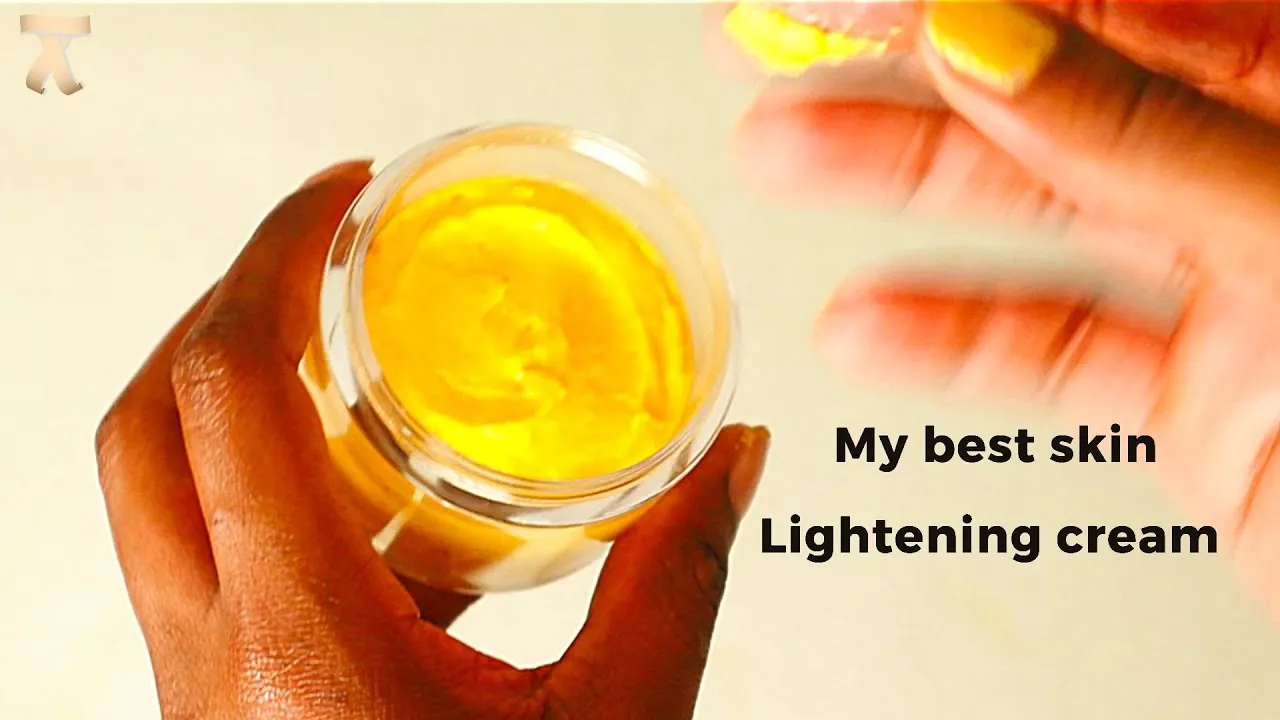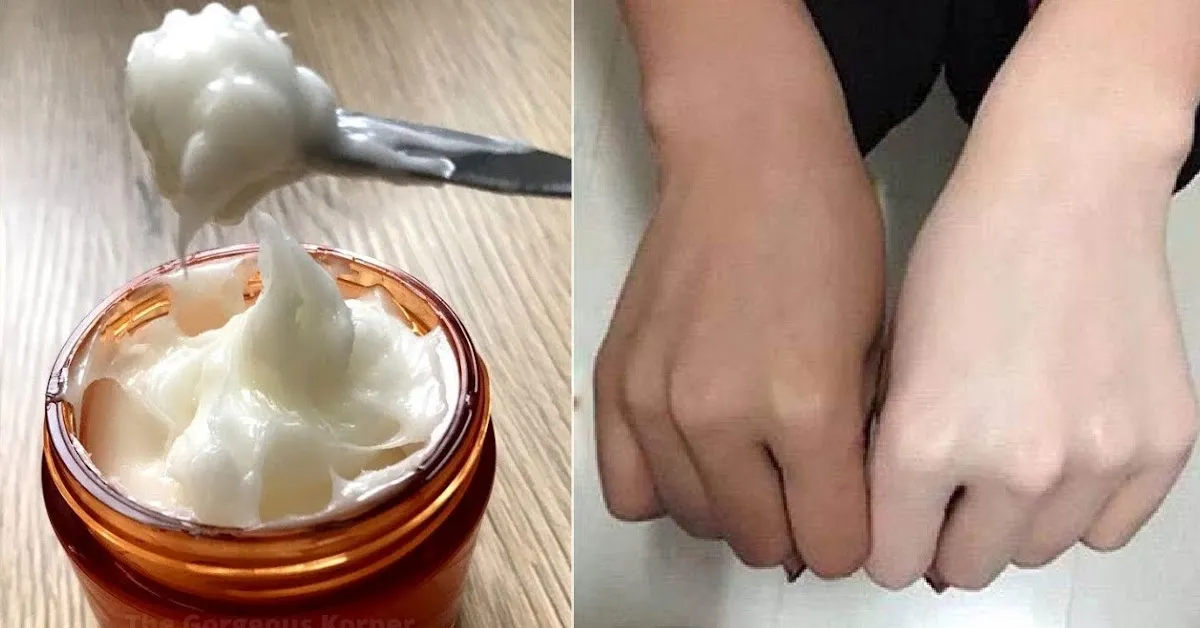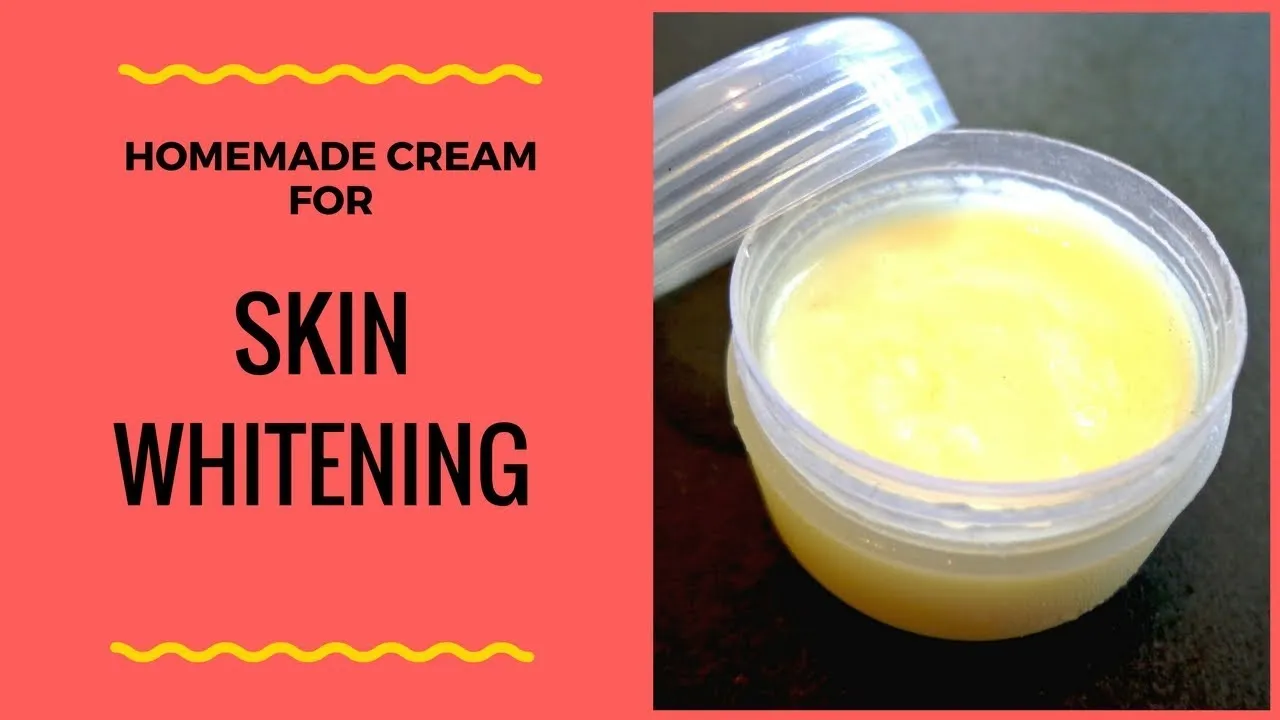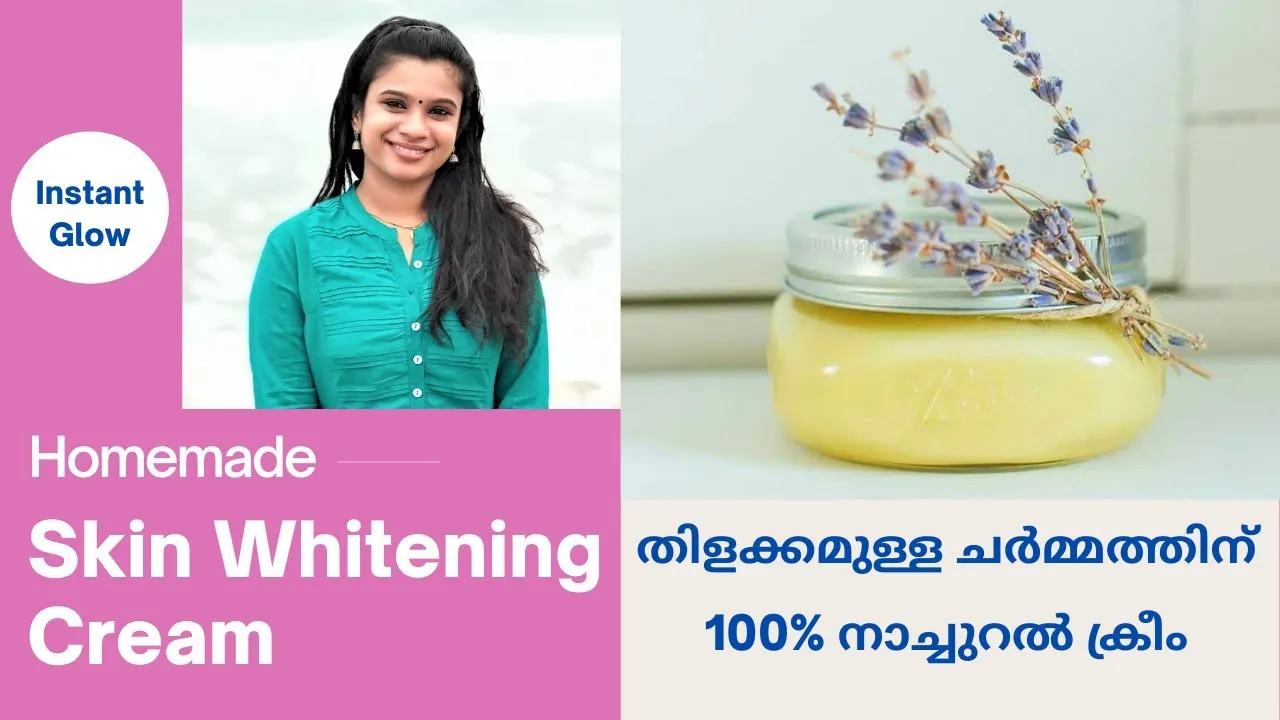Understanding Skin Whitening Creams
Skin whitening creams have gained popularity for their potential to lighten the skin or reduce the appearance of dark spots and uneven skin tone. The core purpose of these creams is to diminish melanin, the pigment responsible for skin color. They work by inhibiting tyrosinase, an enzyme crucial for melanin production. While many commercial products are available, homemade skin whitening creams offer a natural, potentially cost-effective, and customizable alternative. However, it is essential to understand both the advantages and potential risks before embarking on this DIY skincare journey. This guide provides an overview of what skin whitening creams are, how they function, and what you should know before making one.
Benefits of Homemade Skin Whitening Creams
Homemade skin whitening creams provide several advantages over commercially available products. Firstly, they allow you to control the ingredients, eliminating potentially harmful chemicals like parabens, sulfates, and artificial fragrances often found in store-bought creams. This is particularly beneficial for individuals with sensitive skin or allergies. Secondly, homemade creams can be tailored to your specific skin type and concerns. You can adjust the ingredients and concentrations to address issues such as hyperpigmentation, acne scars, or general dullness. Thirdly, creating your own creams can be a cost-effective option, as many natural ingredients are readily available and less expensive than branded products. Finally, making your own skincare products can be a rewarding and empowering experience, allowing you to take control of your beauty routine and understand what goes on your skin.
Identifying the Right Ingredients

Choosing the right ingredients is paramount for creating an effective and safe homemade skin whitening cream. Effective ingredients are those that can reduce melanin production, promote skin cell turnover, or provide antioxidant protection. When formulating your cream, carefully research each ingredient and its impact on the skin.
Effective Skin Lightening Ingredients
Several natural ingredients are known for their skin-lightening properties. Vitamin C, a potent antioxidant, helps to inhibit melanin production and protect the skin from environmental damage. Licorice extract contains glabridin, which can reduce hyperpigmentation by interfering with tyrosinase. Arbutin, found in bearberry extract, is a natural derivative of hydroquinone and works by blocking melanin synthesis. Niacinamide (Vitamin B3) helps to reduce inflammation and even skin tone. Additionally, ingredients such as lemon juice, though potent, should be used with caution due to their acidity and potential for sun sensitivity. When selecting ingredients, always prioritize natural, high-quality options.
Exfoliating Agents and Their Role
Exfoliating agents play a crucial role in skin whitening by removing dead skin cells, promoting cell turnover, and allowing skin lightening ingredients to penetrate more effectively. Alpha-hydroxy acids (AHAs) like lactic acid (from yogurt) and glycolic acid (from sugar cane) gently exfoliate the skin, revealing a brighter complexion. Beta-hydroxy acids (BHAs), such as salicylic acid, are oil-soluble and can penetrate pores to remove debris and reduce breakouts. Physical exfoliants, like finely ground rice flour or sugar, can also be used for gentle exfoliation. However, over-exfoliation can lead to irritation and damage, so it is essential to use these agents in moderation and according to your skin’s tolerance.
Moisturizing Components for Skin Health

Moisturizing is crucial for maintaining healthy, radiant skin, especially when using skin-lightening ingredients that may cause dryness. Natural oils such as coconut oil, shea butter, and almond oil provide hydration, nourish the skin, and act as a barrier against moisture loss. Hyaluronic acid, a powerful humectant, attracts and retains water, keeping the skin plump and hydrated. Aloe vera soothes and moisturizes, reducing inflammation and promoting healing. Glycerin, another humectant, also helps to draw moisture to the skin. Incorporating these moisturizing components into your homemade cream ensures that your skin remains healthy and balanced during the whitening process.
Step-by-Step Guide to Making Homemade Cream
Making your own homemade skin whitening cream requires careful preparation and attention to detail. Following a well-defined process will ensure the safety and effectiveness of your final product. Below is a detailed guide to making your own cream.
Gathering Your Supplies
Before you start, gather all the necessary supplies. You will need a clean workspace, including a mixing bowl (glass or stainless steel), a double boiler or a heat-safe container and pot, a whisk or spatula, measuring spoons and cups, airtight containers for storage, and a scale for precise measurements. Ensure all equipment is thoroughly cleaned and sterilized to prevent contamination. Ingredients should be fresh and of high quality. Consider using distilled water to minimize impurities. Finally, have a notepad ready to record your recipe and any observations during the process.
Preparing and Mixing Ingredients

The preparation and mixing process is critical for creating a stable and effective cream. First, if you’re using solid oils like shea butter or coconut oil, gently melt them using a double boiler or microwave in short intervals. Then, add any liquid oils and blend them thoroughly. If incorporating water-based ingredients, slowly add them while continuously stirring to create an emulsion. Add your active ingredients, such as vitamin C or licorice extract, ensuring they are evenly dispersed. Use a whisk or spatula to mix until the cream reaches a smooth, consistent texture. Be patient, and adjust the consistency with more oil or water as needed. Test the pH of your cream to ensure it falls within a safe range for skin application, typically between 4.5 and 6.5.
Proper Storage and Shelf Life
Proper storage is essential to maintain the efficacy and extend the shelf life of your homemade cream. Store the cream in a clean, airtight container, preferably a dark glass jar to protect it from light. Keep the cream in a cool, dark place, away from direct sunlight and heat. The shelf life of a homemade cream varies depending on the ingredients used, typically ranging from a few weeks to a few months. Be mindful of any changes in color, texture, or smell, which may indicate spoilage. Consider adding a natural preservative, such as Vitamin E oil or a few drops of grapefruit seed extract, to prolong the cream’s lifespan. Always label your cream with the date of creation to track its freshness.
Application Techniques and Best Practices
Proper application is crucial for achieving the desired results and minimizing potential risks. Adhering to the correct techniques and best practices ensures both safety and effectiveness.
Patch Testing and Skin Sensitivity

Before applying the cream to a large area of your skin, always perform a patch test. Apply a small amount of the cream to an inconspicuous area, such as behind your ear or on your inner arm. Wait 24 to 48 hours to observe for any adverse reactions, such as redness, itching, burning, or swelling. If you experience any irritation, discontinue use immediately. Patch testing helps identify potential allergic reactions or sensitivities to any ingredient in the cream. If the patch test is successful, you can proceed with applying the cream to the desired areas.
Optimal Application Methods
Apply the cream to clean, dry skin, preferably after showering or cleansing, when your pores are open. Gently massage the cream into the skin using upward circular motions until it is fully absorbed. Use the cream once or twice daily, depending on your skin type and the ingredients used. Avoid applying the cream to sensitive areas like the eyes, and be cautious when using it on the face. During the day, always wear sunscreen with an SPF of 30 or higher, as skin-lightening ingredients can increase sun sensitivity. Consistency is key, so follow your skincare routine regularly for the best results. Observe your skin’s response and adjust the frequency of application if needed. Avoid using harsh scrubs during this process, as they may cause irritation.
Potential Risks and Side Effects
While homemade skin whitening creams offer various benefits, it’s essential to be aware of the potential risks and side effects. Knowledge and caution can help you avoid issues and maintain healthy skin.
Common Allergic Reactions

Allergic reactions are a common risk associated with homemade skin whitening creams. Ingredients like essential oils, plant extracts, and certain preservatives can cause skin irritation, redness, itching, or swelling. Perform a patch test before widespread application to check for allergic reactions. If you experience any signs of an allergic reaction, discontinue use immediately and consult a dermatologist. Always use ingredients from reputable sources, and avoid those known to cause skin irritation or allergies. If you have known allergies, carefully check the ingredient list for potential allergens.
When to Consult a Dermatologist
Consulting a dermatologist is crucial if you experience persistent skin irritation, unusual reactions, or if your skin condition worsens after using a homemade skin whitening cream. A dermatologist can diagnose any underlying skin conditions, provide professional advice, and recommend safe and effective skincare treatments. If you notice severe side effects such as severe redness, blistering, or changes in skin texture, seek immediate medical attention. Furthermore, if you are uncertain about any ingredient or the suitability of the cream for your skin type, seek professional guidance. A dermatologist can also help monitor the effectiveness of the treatment and adjust the regimen if needed, ensuring optimal skin health and safety.
Reviewing User Experiences and Testimonials
Reading user experiences and testimonials can provide valuable insights into the effectiveness and safety of homemade skin whitening creams. These real-world examples can help you manage expectations, assess results, and understand potential challenges. Remember to approach these reviews critically and look for consistent themes or patterns.
Evaluating Real-World Results

When evaluating user reviews, pay attention to the types of results achieved. Some users may report a reduction in dark spots, improved skin tone, or enhanced skin radiance. Other users may note minimal effects or adverse reactions. Consider the ingredients used in the reviewed creams and the application methods described. Look for reviews that mention the duration of use and the consistency of application. Be realistic about the expected results, as skin whitening can be a gradual process. Remember that individual results can vary based on skin type, skin condition, and the specific ingredients used.
Comparing Before-and-After Photos
Before-and-after photos are a compelling way to assess the effectiveness of homemade skin whitening creams. When reviewing these photos, assess the lighting conditions, as inconsistent lighting can distort the appearance of the skin. Examine the before-and-after images closely for any visible changes in skin tone, dark spots, or overall skin texture. Be aware that some photos may be enhanced or altered. Look for multiple sets of before-and-after photos from different users to get a more comprehensive view. While photos can be helpful, they should be considered in conjunction with user reviews and other information to form a complete understanding of the cream’s potential.
Final Thoughts and Conclusion
Homemade skin whitening creams can be a rewarding and cost-effective way to address skin concerns and improve your complexion. By understanding the ingredients, following proper formulation techniques, and practicing safe application methods, you can create effective and safe creams. Always prioritize safety, perform patch tests, and consult with a dermatologist if you have any concerns. Be realistic about the results and patient with the process. With dedication and care, homemade skin whitening creams can be a valuable addition to your skincare routine. Remember that consistency, proper sun protection, and a healthy lifestyle are essential for maintaining radiant and healthy skin. Ultimately, the best approach combines natural ingredients with safe practices to achieve the desired skin lightening effects.
